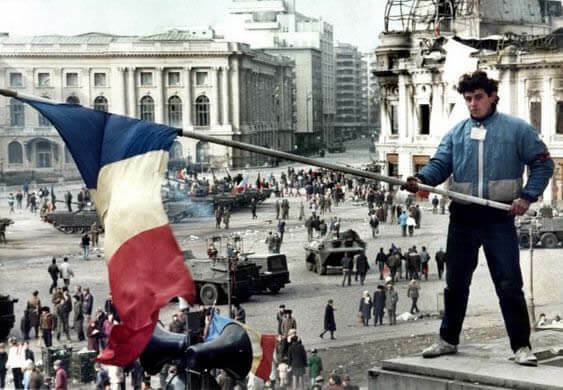Significance of the 1989 Romanian Revolution
Miscellanea / / August 08, 2023
 In the 1980s, Romanian dictator Nicolae Ceausescu and his wife Elena were hailed as the great leaders of the communist nation. Popular support was not something spontaneous and sincere but was part of a propaganda strategy centered on the cult of personality of the leader.
In the 1980s, Romanian dictator Nicolae Ceausescu and his wife Elena were hailed as the great leaders of the communist nation. Popular support was not something spontaneous and sincere but was part of a propaganda strategy centered on the cult of personality of the leader.
In everyday life, Romanians were controlled by the state apparatus and the people were subjected to strong restrictions: power outages in homes caused by energy limitations, food shortages and lack of medicines basic.
At the same time, some ethnic minorities were brutally persecuted. Romania had significant financial debts and was on the verge of economic collapse. In this context, the population he had to queue endlessly to obtain basic necessities.
Before the revolutionary process, Ceausescu enjoyed a good international press.
The atrocities during his time in power were logically silenced by state propaganda. At the same time, in the media Westerners the figure of Ceausescu was valued positively, since he had opposed the repression of the Soviets against Czechoslovakia in 1968.
In a few weeks, a dictatorship that had lasted more than 25 years was liquidated
In December 1989 the inhabitants of the city of Timisoara expressed their discontent in a massive demonstration against the secret police of the dictator who harshly repressed the political dissidents. This circumstance encouraged other protests in the rest of the country. The repression of armed forces it caused hundreds of deaths and thousands of injuries and many citizens were arrested.
On December 21, the communist leader addressed the nation as a whole with the intention of stopping the wave of protests and labeling the protesters as anti-social hooligans. Despite this, his strategy failed and new uprisings broke out in the capital that could not be suppressed by military forces. This caused the dictator and his wife to try to escape by helicopter but they were intercepted and detained.

The presidential palace where the dictator and his wife resided was set on fire by popular forces
After three days both were executed after a summary trial before a military court. The fall of the dictator finally became a party for the Romanian people.
From that moment on, a new leader, Ion Iliescu, became the standard bearer of a motion popular and began a stage of transition towards a democratic system.
One of the first decisions taken by the provisional government was the release of political prisoners.
Image: Red Cross
write a comment
Contribute with your comment to add value, correct or debate the topic.Privacy: a) your data will not be shared with anyone; b) your email will not be published; c) to avoid misuse, all messages are moderated.



